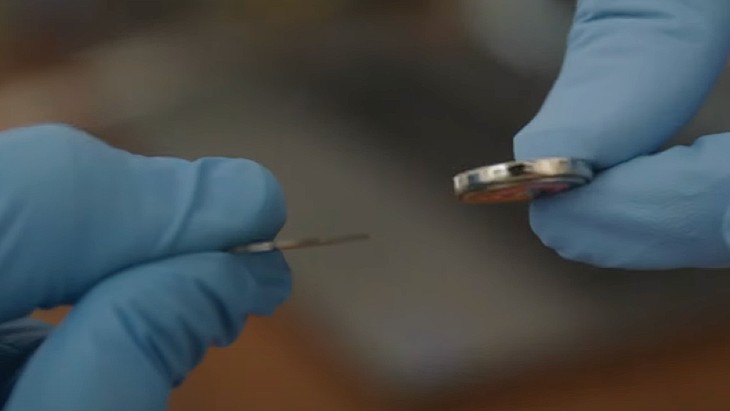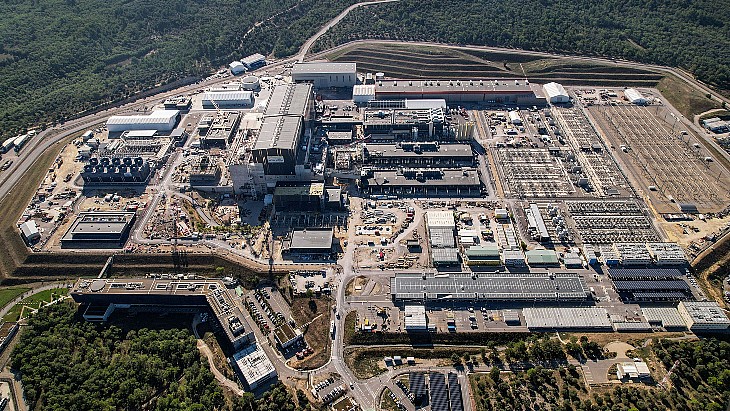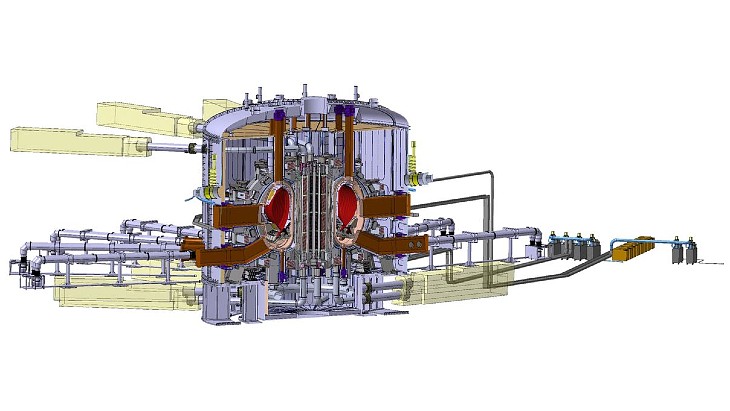Tokamak Energy developing new laser technology
.jpg)
Plasma temperatures inside a tokamak reach more than 100 million degrees Celsius. The hydrogen fuel must be closely and accurately measured by a specialist laser system to keep the hot plasma stable, hold density and maintain fusion conditions.
The new laser-based dispersion interferometer system is currently being tested at Tokamak Energy's Oxford headquarters before being installed on its world record-breaking fusion machine ST40 later this year.
"Measuring plasma density is key to our understanding and control of the fusion fuel and efficient future power plant operations," said Tokamak Energy plasma physicist Tadas Pyragius. "A laser beam fired through the plasma interacts with the electrons and tells us the density of the fuel, which is essential for sustained fusion conditions and delivering secure and reliable energy to the grid.
"The extreme conditions created by the fusion process mean we need to perfect the laser-based diagnostics technology now to move forward on our mission of delivering clean, secure and affordable fusion energy in the 2030s."
Tokamak Energy successfully commissioned a Thomson scattering laser diagnostic on ST40 last year to provide detailed readings of plasma temperature and density at specific locations.
To supplement this, the new dispersion interferometer system will determine average density across the entire plasma. Importantly, this system also shows great promise in being suitably robust and reliable to operate in future power plant environments.
Tokamak Energy announced in February last year it is to build a prototype spherical tokamak, the ST80-HTS, at the UK Atomic Energy Authority's Culham Campus, near Oxford, England, by 2026 "to demonstrate the full potential of high temperature superconducting magnets" and to inform the design of its fusion pilot plant, ST-E1, which is slated to demonstrate the capability to deliver electricity - producing up to 200 MW of net electrical power - in the early 2030s. That would then be followed by the roll-out of 500 MW commercial fusion plants "in the mid-2030s".
Tokamak Energy's current ST40 fusion device in Milton Park, near Culham, has recently been upgraded to enable experiments relating to future features that will be incorporated in both the ST80-HTS and ST-E1. Last year it achieved a 100 million degrees Celsius fusion plasma - the highest temperature recorded in a compact spherical tokamak.



_70828.jpg)





_66488.jpg)


